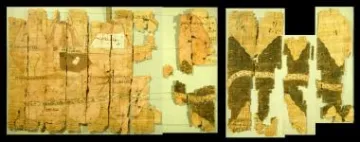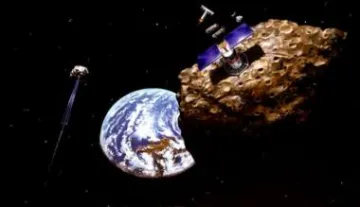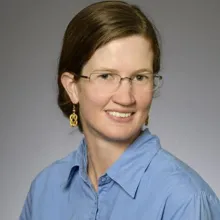published in June 2020, last updated: March 2021
While in the era of climate change and electric vehicles the public’s awareness of how energy is produced has improved, “people use most nonrenewable resources without knowing where they came from”. These words from a student describe the general lack of appreciation of modern society’s dependence on the earth’s resources, from petroleum to metals to industrial minerals.
Unearthing the underappreciated influence of resources
The University of Arizona’s departments of Mining and Geological Engineering (MGE), Geosciences, and Anthropology collaborated in an attempt to change that. In Spring 2020 a new UA-approved general education course, Nonrenewable Resources and Human Civilizations was offered for the first time. Isabel Barton from MGE, David Killick from Anthropology, and Mark Barton from Geosciences teamed up to bring one of the first mining engineering courses to the general student body. Mark Barton, professor in Geosciences is pleased with the outcome: "The story of how earth resources are woven into the fabric of civilization is pretty amazing – and little appreciated – from the earliest stone axe to the wizardry of modern technology. It's exciting to see this course now tell this oft-forgotten story that each one of us lives every day.” The course is included in the University’s general education catalog as a Tier 2, i. e. in-depth, Natural Sciences course, making it an attractive choice for students not majoring in science or engineering to fulfill their course requirements.
This semester’s group of 21, mainly freshmen and sophomores, was diverse: Less than one third from the Colleges of Science and Engineering, one third were from the College of Social & Behavioral Science, and the remaining group had various majors, including Fine Arts and Architecture. Many of them had enrolled out of curiosity, without a lot of prior knowledge.
“Going beyond surprising the audience with how much copper goes into a Prius, the course takes a longer-term, worldwide view of all the ways that nonrenewable resources have helped civilizations develop over time.”
– Assistant Professor Isabel Barton, course instructor
The course includes the technology and industry, but also non-scientific issues such as strategic resources and government resources policy, the role of resources in political and social life, and how to balance the competing needs of preserving the environment with providing materials for society. Science and engineering are fused with history and economics to make sure there is something for everyone – that some aspect of the material will draw the interest of everyone, no matter what his or her background. For example, carbides are explained in the context of the once highly coveted Damascus steel blades, and a discussion of OPEC lends itself to a closer look at the different weights and compositions of crude oil.
How metals shaped human history

The Turin papyrus map, drawn about 1150 BC, shows the site of a gold mine and is the earliest know geological map
The course follows the rise of civilization and starts with the three earliest nonrenewable resources to be used by humans at the end of the Stone Age: copper, silver, and gold. Then the class went over all the different ways that bronze was made and used around the Bronze Age world, from weapons and tools to decorative items. “Metals played a huge role in the development and destruction of civilizations” marveled one student. The class also enjoyed learning about the metallurgy and uses of metals in China and Africa: “Too often history classes are Euro-centric but it was very interesting to hear about their advances and different styles compared to Europe.”
The students learned of the increasing use of, and need for, metals over the course of history, learning that every new invention requires new resources.
“Every technological advance has a huge effect on society that is not talked about such as more mining needed to get the materials.”
– Course participant

Artist's rendition of mining in space
The discussion of nonrenewable resource production and trade in the medieval period, including the Black Death, seemed eerily relevant. After that, with the early modern period and the Industrial Revolution, the outlines of the modern world started to come into focus – thanks to coal, iron, and eventually steel and – coming full circle – copper. During the 20th century the emphasis was on strategic resources. Examples from both world wars showed the consequences of shortages in molybdenum, tungsten, cobalt, chrome, and other steel-alloying and superalloy elements, fuels, and everything else the earth provides that we rely on.
The course finished with a focus on the future with a discussion of resource exhaustion, seawater and seafloor mining, and space mining. Students were amazed to learn how modern and future resources extraction is becoming even more high-tech, as they learned about seafloor-mining robots and plans to capture asteroids and mine them for water
Dispelling common misconceptions
At the end of the course, the students were asked what they thought were society’s biggest misconceptions about nonrenewable resources, based on what they’d learned. One answer: “I think the biggest misunderstanding is that renewable resources are free and that nonrenewable resources are pure evil. We wouldn’t be living the same lifestyle without nonrenewable resources and it will be more difficult to replace them than people think.”
“Even when we go to renewable forms of energy like electric vehicles and solar energy, we are still using nonrenewable resources, just different types. I think people think it is so easy to stop using these resources when in actuality the human race may never be able to stop using them.”
– Course participant
The course is being offered again in Fall 2022; it is cross-listed between MGE (MNE 201) and Anthropology.
What students learned - in their own words
"Mining is important to society"
"How nonrenewable resources played a critical role in civilizations from ancient times to the modern day"
"How big of a role non-renewable resources play in all aspects of life"
"That non-renewable resources have driven much of the changes in human history"


